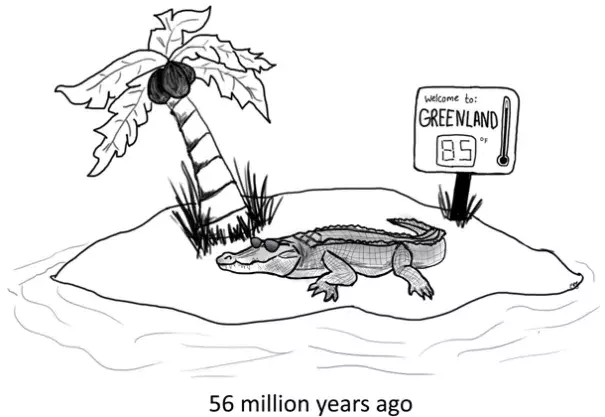Explainer: What's the hottest Earth's ever been?

Our planet probably experienced its hottest temperatures in its earliest days, when it was still colliding with other rocky debris (planetesimals) careening around the solar system. The heat of these collisions would have kept Earth molten, with top-of-the-atmosphere temperatures upward of 3,600° Fahrenheit.
Even after those first scorching millennia, however, the planet has sometimes been much warmer than it is now. One of the warmest times was during the geologic period known as the Neoproterozoic, between 600 and 800 million years ago. Another “warm age” is a period geologists call the Paleocene-Eocene Thermal Maximum, which occurred about 56 million years ago.
...
The tropical Arctic
Another stretch of Earth history that scientists count among the planet’s warmest occurred about 55-56 million years ago. The episode is known as the Paleocene-Eocene Thermal Maximum (PETM).
Stretching from about 66-34 million years ago, the Paleocene and Eocene were the first geologic epochs following the end of the Mesozoic Era. (The Mesozoic—the age of dinosaurs—was itself an era punctuated by "hothouse" conditions.) Geologists and paleontologists think that during much of the Paleocene and early Eocene, the poles were free of ice caps, and palm trees and crocodiles lived above the Arctic Circle. The transition between the two epochs around 56 million years ago was marked by a rapid spike in global temperature.
During the PETM, the global mean temperature appears to have risen by as much as 5-8°C (9-14°F) to an average temperature as high as 73°F. (Again, today’s global average is shy of 60°F.) At roughly the same time, paleoclimate data like fossilized phytoplankton and ocean sediments record a massive release of carbon dioxide into the atmosphere, at least doubling or possibly even quadrupling the background concentrations.
It is still uncertain where all the carbon dioxide came from and what the exact sequence of events was. Scientists have considered the drying up of large inland seas, volcanic activity, thawing permafrost, release of methane from warming ocean sediments, huge wildfires, and even—briefly—a comet.


